Jinbin Zhang
Labels in Extremes: How Well Calibrated are Extreme Multi-label Classifiers?
Nov 06, 2024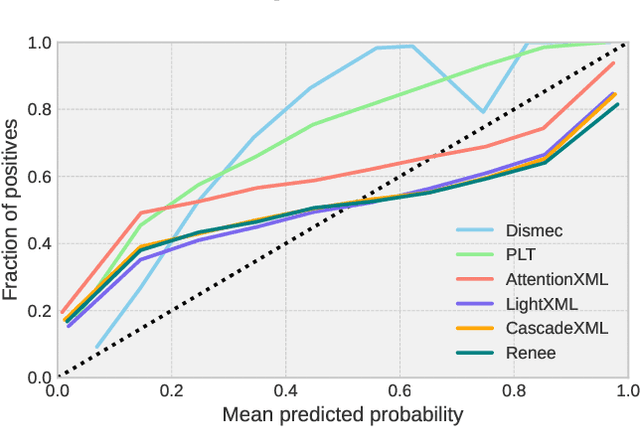


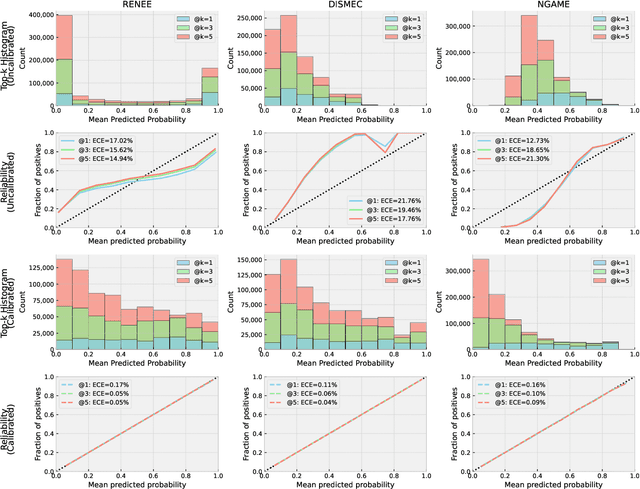
Abstract:Extreme multilabel classification (XMLC) problems occur in settings such as related product recommendation, large-scale document tagging, or ad prediction, and are characterized by a label space that can span millions of possible labels. There are two implicit tasks that the classifier performs: \emph{Evaluating} each potential label for its expected worth, and then \emph{selecting} the best candidates. For the latter task, only the relative order of scores matters, and this is what is captured by the standard evaluation procedure in the XMLC literature. However, in many practical applications, it is important to have a good estimate of the actual probability of a label being relevant, e.g., to decide whether to pay the fee to be allowed to display the corresponding ad. To judge whether an extreme classifier is indeed suited to this task, one can look, for example, to whether it returns \emph{calibrated} probabilities, which has hitherto not been done in this field. Therefore, this paper aims to establish the current status quo of calibration in XMLC by providing a systematic evaluation, comprising nine models from four different model families across seven benchmark datasets. As naive application of Expected Calibration Error (ECE) leads to meaningless results in long-tailed XMC datasets, we instead introduce the notion of \emph{calibration@k} (e.g., ECE@k), which focusses on the top-$k$ probability mass, offering a more appropriate measure for evaluating probability calibration in XMLC scenarios. While we find that different models can exhibit widely varying reliability plots, we also show that post-training calibration via a computationally efficient isotonic regression method enhances model calibration without sacrificing prediction accuracy. Thus, the practitioner can choose the model family based on accuracy considerations, and leave calibration to isotonic regression.
Zero-Shot Learning Over Large Output Spaces : Utilizing Indirect Knowledge Extraction from Large Language Models
Jun 13, 2024Abstract:Extreme Multi-label Learning (XMC) is a task that allocates the most relevant labels for an instance from a predefined label set. Extreme Zero-shot XMC (EZ-XMC) is a special setting of XMC wherein no supervision is provided; only the instances (raw text of the document) and the predetermined label set are given. The scenario is designed to address cold-start problems in categorization and recommendation. Traditional state-of-the-art methods extract pseudo labels from the document title or segments. These labels from the document are used to train a zero-shot bi-encoder model. The main issue with these generated labels is their misalignment with the tagging task. In this work, we propose a framework to train a small bi-encoder model via the feedback from the large language model (LLM), the bi-encoder model encodes the document and labels into embeddings for retrieval. Our approach leverages the zero-shot ability of LLM to assess the correlation between labels and the document instead of using the low-quality labels extracted from the document itself. Our method also guarantees fast inference without the involvement of LLM. The performance of our approach outperforms the SOTA methods on various datasets while retaining a similar training time for large datasets.
UER: An Open-Source Toolkit for Pre-training Models
Sep 12, 2019
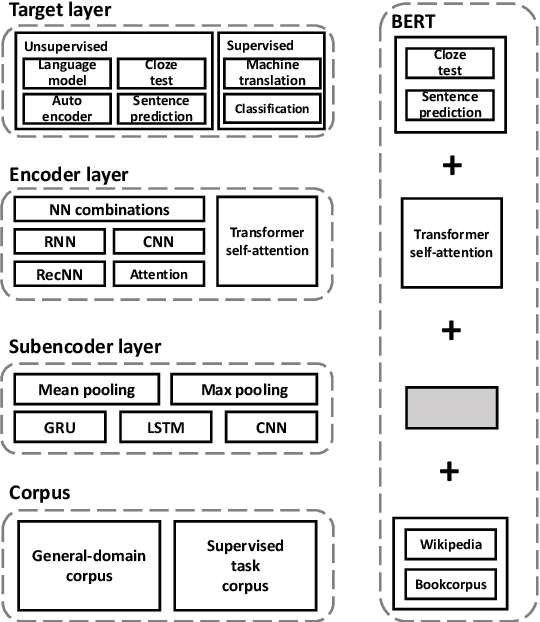


Abstract:Existing works, including ELMO and BERT, have revealed the importance of pre-training for NLP tasks. While there does not exist a single pre-training model that works best in all cases, it is of necessity to develop a framework that is able to deploy various pre-training models efficiently. For this purpose, we propose an assemble-on-demand pre-training toolkit, namely Universal Encoder Representations (UER). UER is loosely coupled, and encapsulated with rich modules. By assembling modules on demand, users can either reproduce a state-of-the-art pre-training model or develop a pre-training model that remains unexplored. With UER, we have built a model zoo, which contains pre-trained models based on different corpora, encoders, and targets (objectives). With proper pre-trained models, we could achieve new state-of-the-art results on a range of downstream datasets.
Multi-task Learning for Chinese Word Usage Errors Detection
Apr 03, 2019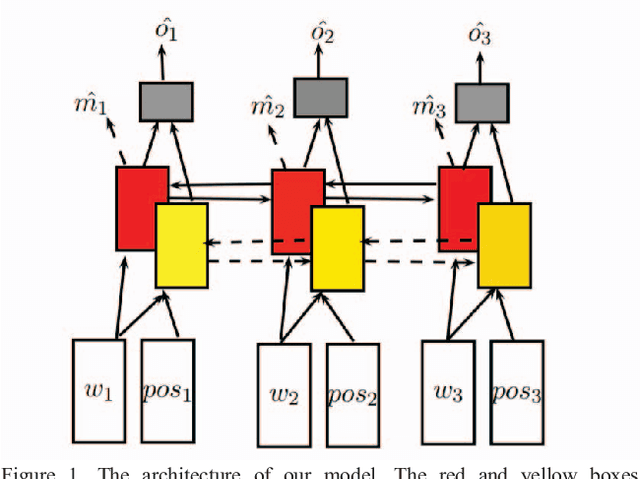
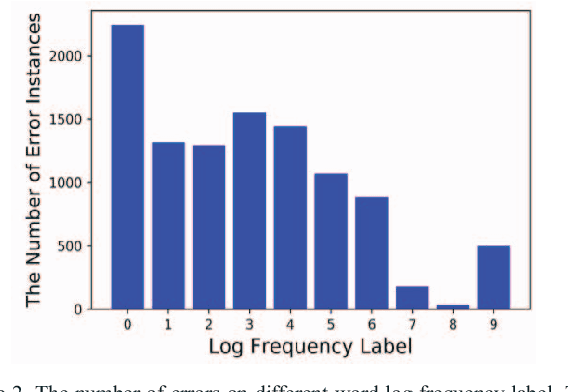
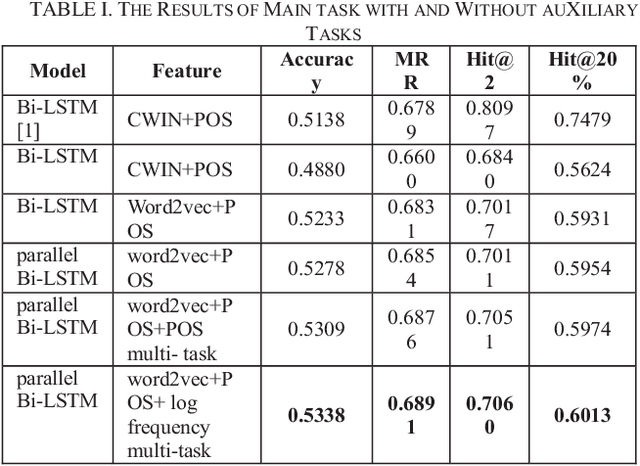
Abstract:Chinese word usage errors often occur in non-native Chinese learners' writing. It is very helpful for non-native Chinese learners to detect them automatically when learning writing. In this paper, we propose a novel approach, which takes advantages of different auxiliary tasks, such as POS-tagging prediction and word log frequency prediction, to help the task of Chinese word usage error detection. With the help of these auxiliary tasks, we achieve the state-of-the-art results on the performances on the HSK corpus data, without any other extra data.
* 4 pages, 2 figures, 1 table, has been accepted as a conference paper of the 3rd IEEE International Conference on Computational Intelligence and Applications (ICCIA 2018)
 Add to Chrome
Add to Chrome Add to Firefox
Add to Firefox Add to Edge
Add to Edge